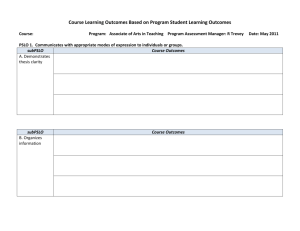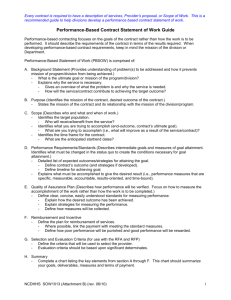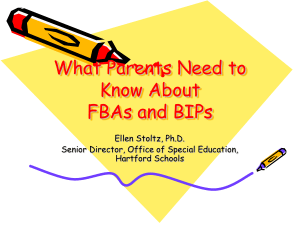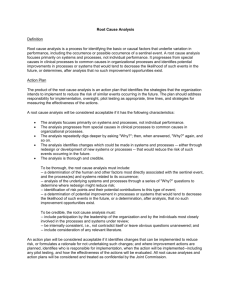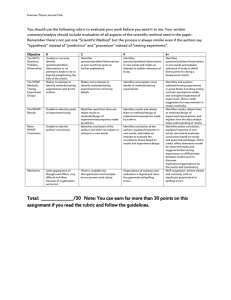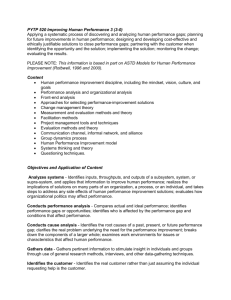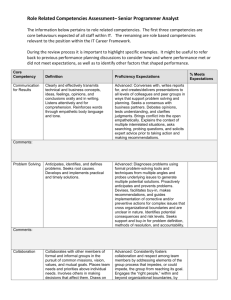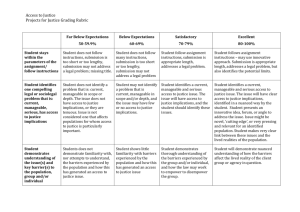Grade 6-CC - Hopedale Public Schools
advertisement
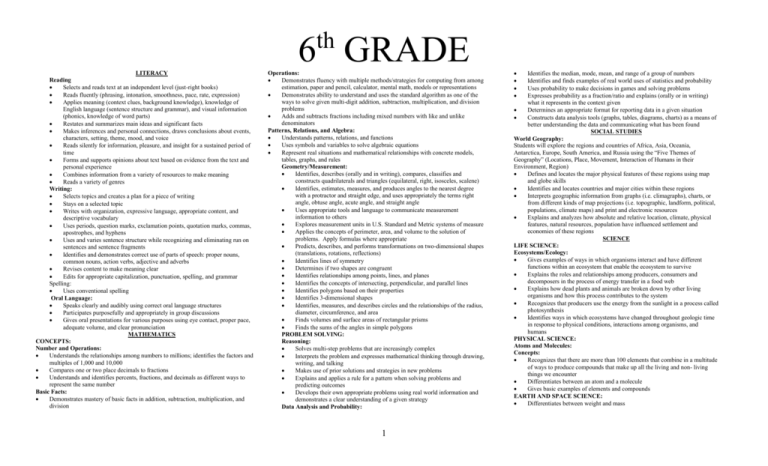
th 6 GRADE LITERACY Reading Selects and reads text at an independent level (just-right books) Reads fluently (phrasing, intonation, smoothness, pace, rate, expression) Applies meaning (context clues, background knowledge), knowledge of English language (sentence structure and grammar), and visual information (phonics, knowledge of word parts) Restates and summarizes main ideas and significant facts Makes inferences and personal connections, draws conclusions about events, characters, setting, theme, mood, and voice Reads silently for information, pleasure, and insight for a sustained period of time Forms and supports opinions about text based on evidence from the text and personal experience Combines information from a variety of resources to make meaning Reads a variety of genres Writing: Selects topics and creates a plan for a piece of writing Stays on a selected topic Writes with organization, expressive language, appropriate content, and descriptive vocabulary Uses periods, question marks, exclamation points, quotation marks, commas, apostrophes, and hyphens Uses and varies sentence structure while recognizing and eliminating run on sentences and sentence fragments Identifies and demonstrates correct use of parts of speech: proper nouns, common nouns, action verbs, adjective and adverbs Revises content to make meaning clear Edits for appropriate capitalization, punctuation, spelling, and grammar Spelling: Uses conventional spelling Oral Language: Speaks clearly and audibly using correct oral language structures Participates purposefully and appropriately in group discussions Gives oral presentations for various purposes using eye contact, proper pace, adequate volume, and clear pronunciation MATHEMATICS CONCEPTS: Number and Operations: Understands the relationships among numbers to millions; identifies the factors and multiples of 1,000 and 10,000 Compares one or two place decimals to fractions Understands and identifies percents, fractions, and decimals as different ways to represent the same number Basic Facts: Demonstrates mastery of basic facts in addition, subtraction, multiplication, and division Operations: Demonstrates fluency with multiple methods/strategies for computing from among estimation, paper and pencil, calculator, mental math, models or representations Demonstrates ability to understand and uses the standard algorithm as one of the ways to solve given multi-digit addition, subtraction, multiplication, and division problems Adds and subtracts fractions including mixed numbers with like and unlike denominators Patterns, Relations, and Algebra: Understands patterns, relations, and functions Uses symbols and variables to solve algebraic equations Represent real situations and mathematical relationships with concrete models, tables, graphs, and rules Geometry/Measurement: Identifies, describes (orally and in writing), compares, classifies and constructs quadrilaterals and triangles (equilateral, right, isosceles, scalene) Identifies, estimates, measures, and produces angles to the nearest degree with a protractor and straight edge, and uses appropriately the terms right angle, obtuse angle, acute angle, and straight angle Uses appropriate tools and language to communicate measurement information to others Explores measurement units in U.S. Standard and Metric systems of measure Applies the concepts of perimeter, area, and volume to the solution of problems. Apply formulas where appropriate Predicts, describes, and performs transformations on two-dimensional shapes (translations, rotations, reflections) Identifies lines of symmetry Determines if two shapes are congruent Identifies relationships among points, lines, and planes Identifies the concepts of intersecting, perpendicular, and parallel lines Identifies polygons based on their properties Identifies 3-dimensional shapes Identifies, measures, and describes circles and the relationships of the radius, diameter, circumference, and area Finds volumes and surface areas of rectangular prisms Finds the sums of the angles in simple polygons PROBLEM SOLVING: Reasoning: Solves multi-step problems that are increasingly complex Interprets the problem and expresses mathematical thinking through drawing, writing, and talking Makes use of prior solutions and strategies in new problems Explains and applies a rule for a pattern when solving problems and predicting outcomes Develops their own appropriate problems using real world information and demonstrates a clear understanding of a given strategy Data Analysis and Probability: 1 Identifies the median, mode, mean, and range of a group of numbers Identifies and finds examples of real world uses of statistics and probability Uses probability to make decisions in games and solving problems Expresses probability as a fraction/ratio and explains (orally or in writing) what it represents in the context given Determines an appropriate format for reporting data in a given situation Constructs data analysis tools (graphs, tables, diagrams, charts) as a means of better understanding the data and communicating what has been found SOCIAL STUDIES World Geography: Students will explore the regions and countries of Africa, Asia, Oceania, Antarctica, Europe, South America, and Russia using the “Five Themes of Geography” (Locations, Place, Movement, Interaction of Humans in their Environment, Region) Defines and locates the major physical features of these regions using map and globe skills Identifies and locates countries and major cities within these regions Interprets geographic information from graphs (i.e. climagraphs), charts, or from different kinds of map projections (i.e. topographic, landform, political, populations, climate maps) and print and electronic resources Explains and analyzes how absolute and relative location, climate, physical features, natural resources, population have influenced settlement and economies of these regions SCIENCE LIFE SCIENCE: Ecosystems/Ecology: Gives examples of ways in which organisms interact and have different functions within an ecosystem that enable the ecosystem to survive Explains the roles and relationships among producers, consumers and decomposers in the process of energy transfer in a food web Explains how dead plants and animals are broken down by other living organisms and how this process contributes to the system Recognizes that producers use the energy from the sunlight in a process called photosynthesis Identifies ways in which ecosystems have changed throughout geologic time in response to physical conditions, interactions among organisms, and humans PHYSICAL SCIENCE: Atoms and Molecules: Concepts: Recognizes that there are more than 100 elements that combine in a multitude of ways to produce compounds that make up all the living and non- living things we encounter Differentiates between an atom and a molecule Gives basic examples of elements and compounds EARTH AND SPACE SCIENCE: Differentiates between weight and mass th Recognizes that gravity is a force that pulls all things on and near the earth toward the center of the earth Understands that gravity plays a major role in the formation of the planets, stars and solar system and in determining their motions Describes lunar and solar eclipses, and tides Compares and contrasts properties and conditions of objects in the solar system Explains how the tilt of the earth and its revolution around the sun causes the seasons Recognizes that the universe contains many billions of galaxies and that each galaxy contains many billions of stars Describes the layers of the earth Describes how the movement of the earth’s crustal plates causes both slow and rapid changes ART Utilizes line for observational and figure drawing using gesture and contour techniques Applies rules of perspective in drawing architectural forms Demonstrates an understanding of positive and negative Incorporates previously learned shape concepts to create more complex organizations Learns to use color monochromatically Creates complex visual expressions using complimentary colors Learns to use advanced clay techniques to create a sculptural form Employs rhythm and movement to create a dynamic composition. Applies one-point perspective to landscape drawing HEALTH Knows what to do to stay healthy: Identifies methods of health promotion and illness prevention (nutrition, drug awareness, etc.) Recognizes responsible safety practices Identifies positive environmental health practices Interprets accurately general health concepts related to risk areas such as implications of high fat diet, lack of exercise, taking safety precautions, etc. Reports on general health concepts accurately in selected health risk areas such as eating disorders, body images, adolescent feelings, etc. Identifies body systems and how they function: Describes how different body parts and systems work together Knows that individual differences among people occur during growth and development Makes healthy decisions: Differentiates between positive and negative behaviors. Demonstrates basic refusal skills Identifies the effects of internal and external factors that impact health such as media, family values, etc. Applies a decision-making model to a personal health choice such as joining a club, seeking counseling, diet, drugs and alcohol, etc. 6 GRADE Compares health risk information from a variety of sources and judges their validity PHYSICAL EDUCATION Demonstrates striking, dribbling, throwing, catching in dynamic small sided games situations Uses skills and combinations of skills in the actual performance situations, such as applying accuracy, force, and follow-through when projecting objects Understands the basic offensive and defensive strategies of games Demonstrates skills for participation in non-traditional or cooperative games and sports Continues to assume responsibility for their own safety and the safety of others Begins to match different types of physical activities to health-related fitness components Chooses to follow safe practices while participating in moderate to vigorous physical activity in a variety of school and non-school settings Demonstrates the ability to participate with and show respect for persons of similar and different skill levels MUSIC Notates within the full range of the grand staff Uses six elements (melody, rhythm, harmony, form, tone color, dynamics) when composing and performing Conceptualizes, plans, edits, and completes a composition project Critiques composition using appropriate music terminology Discusses the plots of operas such as: La Perichole, Faust, Rigoletto, The Barber of Servile SPANISH Review and practice of previous year’s vocabulary and grammar. Welcomes and Goodbyes. How to describe a person. Likes and Dislikes. Subject Pronouns. Conjugation of regular verbs in present tense (ar, er, ir ending verbs). Cultures of the Spanish speaking countries in South America. Demonstrates an ability to use the topics studied in everyday class situations Answers simple questions about self and asks questions to get information from others Develops word knowledge and participates in class Stays focused on studied topics Recalls main parts of written materials of topics studied in class such as; masculine, feminine, singular, plural, subject, subject pronouns, regular verbs in present tense, and the irregular verbs “gustar” and “ser” Gives written and oral presentations about topics studied in class Gives examples of contributions from own culture to the culture of the Hispanic speaking countries being studied Revised March 5, 2008 2 GRADE SIX LEARNING GOALS Hopedale Public Schools are…
